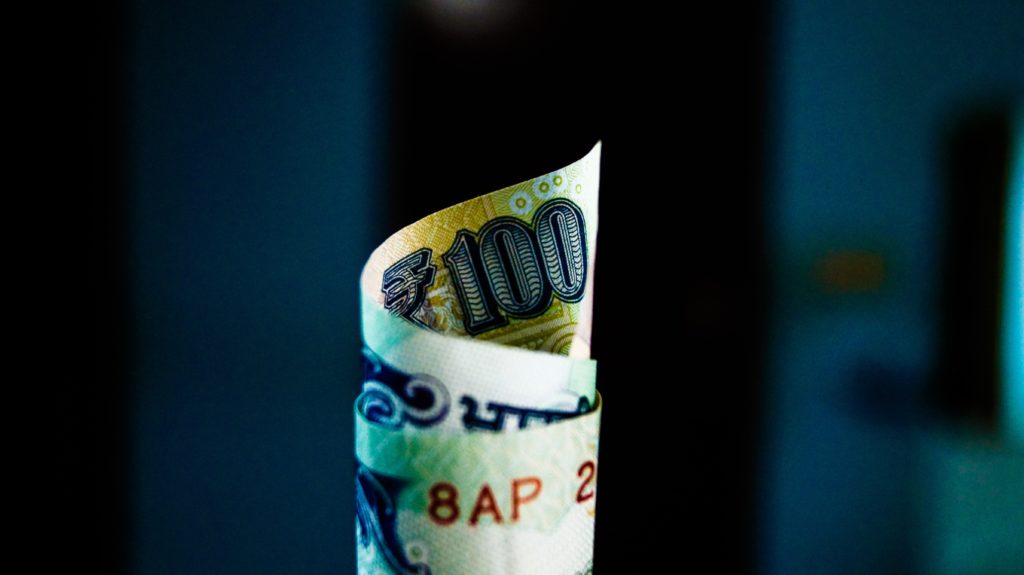Topics
- Introduction
- Cases where refund of tax can be applied for
- Time limit for applying for Refund
- Relevant Date for application of Refund
- Withholding the amount of the refund
- Consumer Welfare Fund
- Calculation of admissible Refund amount of Zero Rated supplies
- Calculation of admissible refund in inverted tax structure (inverted rated supplies)
- Grant of provisional Refund
- Conclusion

1. Introduction:
Refund is an important concept adopted in GST similar to the previous tax regimes. A tax paid in excess to the department should not be an additional burden on the expenditure side of any business. Tax is already a considerable expense. On top of it if tax paid in excess is also booked as expense the situation becomes unsustainable for many a business. To deal with such a scenario refund route is prescribed. You would read about conditions and cases where refund on tax already paid could be availed by any person.
2. Cases where refund of tax can be applied for:
A person can apply for refund in a number of scenarios. These scenarios are mentioned below.

- Pending amount in the electronic cash ledger where the tax is paid and balance amount is applied for refund.
- Refund of unutilized Input Tax Credit accumulated by specialized agencies like United Nations Organization or any Multi Lateral Financial Institution notified under United Nation (Privilege and Immunity) Act, 1947, Consulate or Embassy of foreign countries or any person or class of person notified under Section 55 of Central Goods and Service Tax Act, 2017.
- The input tax credit taken by the supplier of zero rated supplies in their electronic credit ledger. As such suppliers are unable to utilize such credit they can seek refund of the same. The zero rated supplies are those supplies where the rate of GST levied is zero. Export of goods or service and supply of goods or services to SEZ are two types of zero rated supplies.
- The unutilized credit accumulated by the suppliers of inverted tax structure. The inverted tax structure (inverted rated supplies) means the supplies where the rate of GST on output supplies is less than the rate of GST paid on inputs/ input services involved in such supplies. Obviously the supplier may not be able to utilize the available credit completely and credit in electronic ledger would keep on accumulating over time. So he may ask for refund of such credit available.

- Refund of tax paid pursuant to Section 77 of Central Goods and Service Tax Act, 2017. There are situations where a taxable person out of confusion pays tax in IGST (Integrated Goods and Service Tax) instead of CGST (Central Goods and Service Tax) and SGST (State Goods and Service Tax). A reverse situation may also happen where the person has paid CGST and SGST instead of IGST. In such situation the taxable person has the option of paying the tax again correctly without any interest and claim refund of tax paid erroneously.
- Refund on account of any order by court, Tribunal, Appellate Authority or Appellate Tribunal.
- Refund on the amount paid due to mistake.
- Refund on refund vouchers for taxes paid where the goods or the services have not been supplied.
- Refund to International Tourist who pays tax on goods purchased in India and carries with them the goods so purchased.
- Refund on excess amount pre-deposited by casual taxable persons and non-resident taxable persons.
3. Time limit for applying for Refund
Refunds are time barred. That means that if the application for refund is not submitted within the prescribed time then the refund for the amount concerned would be disallowed by the department. This time limit for the application for refund is 2 years from the relevant date. Read the concept of relevant date in the next section.

4. Relevant Date for application of Refund
The relevant date as discussed in the previous section is different in different situation. Such cases are tabulated below.
| Sl. No. | Description of supply | Relevant Date for refund |
| 1. | Goods exported out of India by ship or aircraft | Date on which the ship or aircraft leaves India |
| 2. | Goods exported out of India by land | Date on which such goods pass the frontiers |
| 3. | Goods exported out of India by post | Date on which the goods are dispatched from the concerned post office. |
| 4. | Deemed Export of Goods | Date on which the returns related to such deemed export is filed. |
| 5. | Export of Service outside India where the supply of service is completed prior to the receipt of payment | Date of receipt of payment |
| 6. | Export of Service outside India where the supply of service is completed after the receipt of payment i.e. money paid in advance | Date of issue of invoice |
| 7. | Where tax becomes refundable as a consequence to a judgment, decree or order of any court, Tribunal and Appellate Tribunal | Date of communication of such judgment, decree , order or direction |
| 8. | Refund in case of inverted tax structure | Stipulated date of furnishing the returns |
| 9. | Case where the tax is paid provisionally. E.g. Casual taxable person | Date of adjustment of tax after the final adjustment of advance with actual liability |
| 10. | In cases where person seeking refund is not the supplier. E.g. Refund sought by foreign specialized agencies on the tax paid on goods or services purchased | The date of receipt of goods or services |
| 11. | In any other case | Date of payment of tax |
5. Withholding the amount of the refund
A person is liable to pay any dues in GST tax amount, interest or penalty. Court, Tribunal or Appellate Tribunal has not stayed payment of such amounts. Similarly in another situation a person is required to furnish returns for any supplies but has failed to do so. In both the above situations the department can take two stands
- The department may withhold an amount that is eligible for refund until such returns are furnished or GST, interest or penalty is paid.
- The department may deduct such dues in GST, interest and penalty from the refund amount.
6. Consumer Welfare Fund
This section is mainly for students who want to know how the refunded amount flows in the system. A refund approved by a proper officer of the department gets credited in the Consumer Welfare Fund. Then the amount is paid from this fund to the person who has applied for such refund. Consumer Welfare Fund is constituted by the Government. The amounts that are usually credited to this fund are
- Any amount that a proper officer of the department considers refundable and passes an order accordingly.
- An income from the amount invested from Consumer Welfare Fund is also credited back to this fund
- Other monies received by it.

However there is some refunds where amount is directly paid to the applicant of refund instead of crediting to the Consumer Welfare Fund. These categories of refunds are mentioned below
- Refund of amount paid on export of goods or services.
- Refund of input tax credit on inputs or input services used for export without payment of tax.
- Refund of tax of zero rated supplies.
- Refund of input tax credit availed on supply of goods or services having inverted tax structure.
- Refund of tax paid in CGST and SGST instead of IGST or vice versa.
- Refund of tax or interest of an amount paid by a person but the incident of tax is not passed on to another person.
- Refund of tax or interest of any other class of persons notified by the Government.
7. Calculation of admissible Refund amount of Zero Rated supplies
Let ‘S’ be the Turnover of total zero rated supply of services and ‘G’ be total turnover of zero rated supplies of goods. Zero rated supply of services (S) shall include all the supply of services where the payment is received. If advance is paid for any service then the turnover shall include services which are completed. In simple to take a supply of service in the turnover of zero rated supply the two conditions that needs to be fulfilled are
- Service is complete
- Consideration for service is received
Turnover of zero rated supplies of goods (G) shall include the value of Goods exported under bond or letter of undertaking. This shall not include the goods where the supplier has availed the benefit of
- Notification 48/2017 Central Tax dated 18.10.2017
- Notification 40/ 2017 Central Tax dated 23.10.2017
- Notification 41/2017 Central Tax dated 23.10.2017
Let ‘T’ be total adjusted total turnover. It includes the value of
- The turnover in a state or a union territory exclusive of taxes
- Turnover of zero rated supply of services determined above and non zero rated supply of services.
- The above shall exclude value of exempt supplies other than zero rated supplies and turnover in respect of supplies where benefit of notification mentioned above is availed.
Now,
The maximum admissible refund = (S+G) x (Net Input Tax Credit)/T
8. Calculation of admissible refund in inverted tax structure
Let ‘T’ be total adjusted total turnover. It includes the value of
- The turnover in a state or a union territory exclusive of taxes
- Turnover of zero rated supply of services determined above and non zero rated supply of services.
- The above shall exclude value of exempt supplies other than zero rated supplies and turnover in respect of supplies where benefit of notification mentioned above is availed.
The maximum admissible refund, T = {(Turnover of inverted rated supplies of goods/ services) x Net ITC / Adjusted Total Turnover)} – tax payable on inverted rated supplies
9. Grant of provisional Refund
The government refunds 90% of the amount applied for the refund on provisional basis if
- Refund is on account of zero rated supplies
- Such refund has not been specifically notified for not getting amount on provisional basis
- The applicant has not prosecuted for any offence under the GST Act where the evasion is for an amount more than Rs.2.5 crores.
10. Conclusion
As you have gone through the post you may have appreciated the importance of Refund concept. The excess of tax amount paid by any person is allowed to be taken back. However the concept should be properly understood and used for the benefit of the business.
